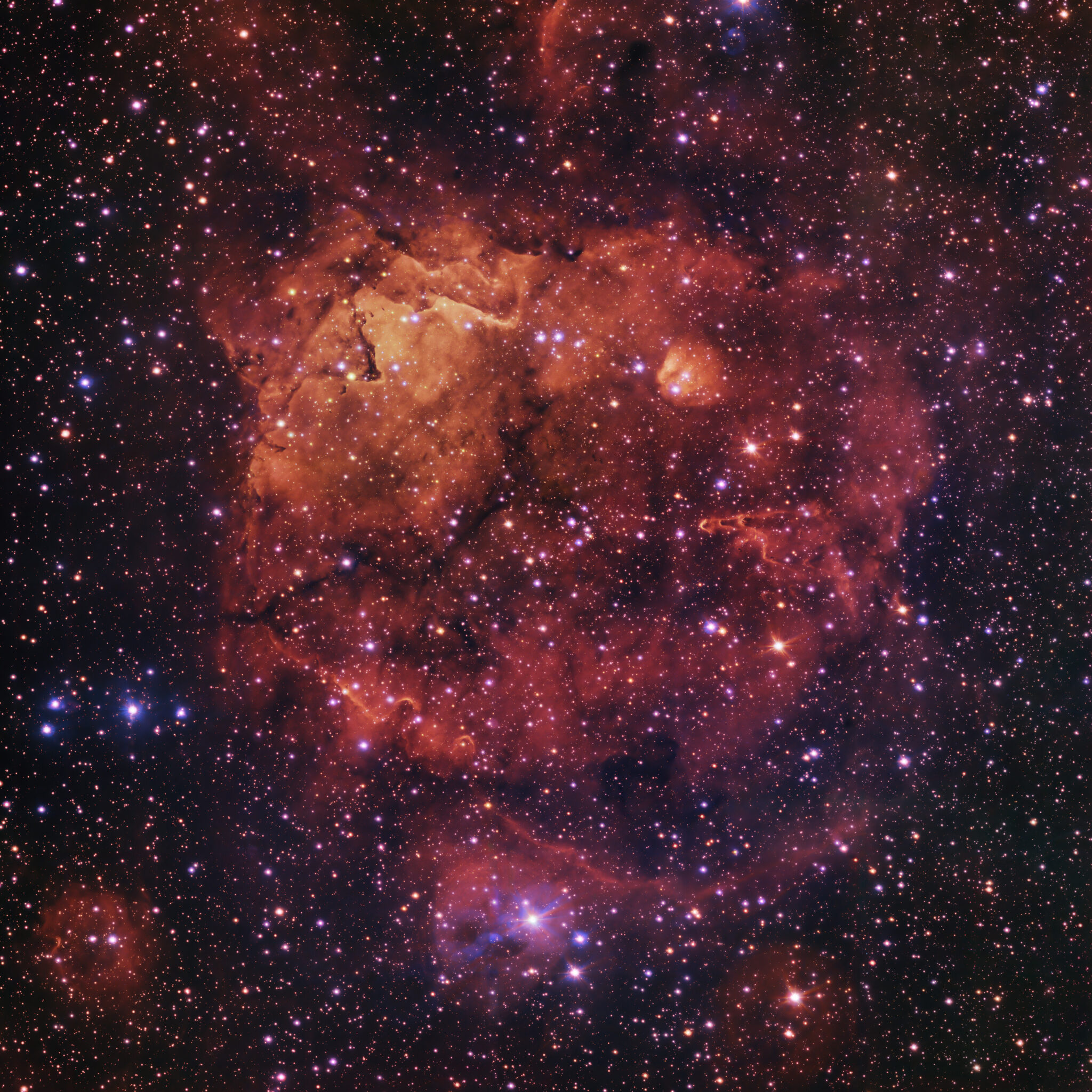The European Southern Observatory has published an image taken by the VLT survey telescope. It captures the nebula Sh2-284. If you look closely, you can notice that its outlines resemble a smiling cat.

Sh2-284 is a stellar nursery — a region of active star formation located at a distance of 15 thousand light-years from Earth in the direction of the constellation Monoceros. This is a vast accumulation of gas and dust stretching over 150 light-years, in which new stars are forming right now.
In the center of the brightest part of the nebula, right under the “cat’s nose”, there is a cluster of young stars known as Dolidze 25. They are a source of powerful ultraviolet radiation that ionizes the surrounding hydrogen clouds. As a result, they begin to glow bright orange and red. It is in such clouds that the building blocks for new stars are located.
The winds produced by the central cluster of stars push gas and dust out of the nebula, creating a cavity. When they encounter denser accumulations of material, they initially blur the areas around them. This creates several pillars that can be seen along the edges of Sh2-284, directed towards the center of the nebula, as, for example, in the right part of the frame. Although these pillars look small in the picture, in fact they are several light-years wide and contain a huge amount of gas and dust, from which new stars are formed.
The image was created using data from the VLT survey telescope. It is designed to map the southern sky in visible light and uses a 256-megapixel camera specially designed to produce wide-angle images. The picture of the “smiling cat” is part of the PHAS+ survey, during which about 500 million objects were studied. These data help scientists better understand the birth, life and final death of stars in our Milky Way.
Earlier we talked about how astronomers discovered a cold cloud of “bricks of life” in the Perseus nebula.
Follow us on Twitter to get the most interesting space news in time
https://twitter.com/ust_magazine

